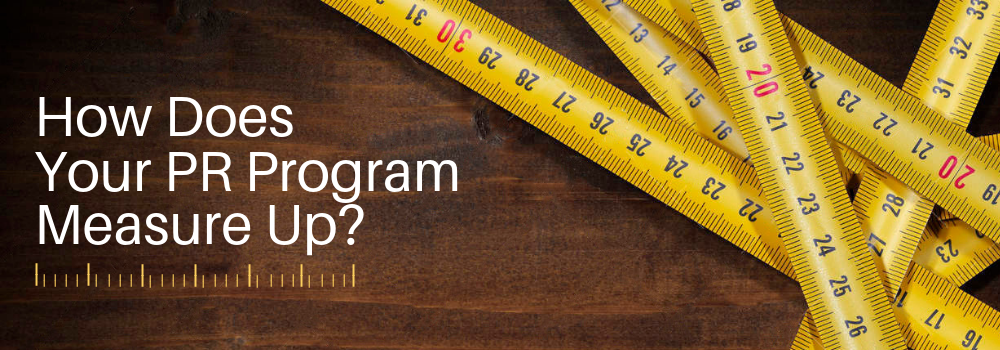It’s a question we get asked pretty much every time we develop a PR program: “…but how will we know it’s working?” And, fair enough – the resources put into PR and marketing efforts can be considerable, both from time spent and a financial standpoint. Data collection and interpretation are playing a huge role in every aspect of business, and the PR profession is not immune. After all, what gets measured gets improved.
But can goodwill towards your brand be quantified?
I hate to answer a question with a question, but in this case it must done: what, exactly, are you hoping to achieve? A startup looking to enter a crowded field will measure success differently than an established player that aims to enhance its reputation and good standing within its market. Where are you now – and where do you want to go?
One note here: Sales and conversions are easy to measure – but sales are the domain of your sales team. Think of a well-balanced PR and marcom program as being the ideal complement to your sales process – an enhancement of your efforts that can (and should!) be leveraged to boost the bottom line.
Now, let’s get to the answers:
There are a number of measurement techniques that can be used to assess the success of your PR program. It’s our job to develop a measurement process that specifically collects and reports on the metrics that are most important to each individual client. Below are a few of the metrics that can be considered:
- Deliverables: These are tangible items and services provided, including news releases, message counsel, media intelligence, and content development
- Media Placements: Coverage and posts
- Influencer Relationships: New relationships cultivated
- Impressions: Impressions as measured by the reach of news releases issued over a wire service
- Website Traffic: Referral traffic in Google Analytics
- Digital Reach: The digital reach of secured online article placements (aggregated unique visitors per month)
- Share of Voice: Benchmark coverage by topic, competitor or other category
- Sentiment: Treatment of a story (positive, negative, neutral)
- Social Reach/Shares: Likes, followers, shares, mentions, re-tweets
- Video Reach: Views or shares on video content
The data generated via your chosen metrics needs to be gathered – there are several tools and dashboards out there that can help you do exactly this, Google Analytics being a popular one. How you use this data is extremely important, as within the data lies the map that will help you (and your PR firm) make the necessary tweaks that will guide your program forward for optimal impact.
By no means is this meant to be an exhaustive list. Rather, the metrics above are a starting point for building a process to assess the progress of your program. Moreover, you’ll now be able to make adjustments and refine your course for greater results.

